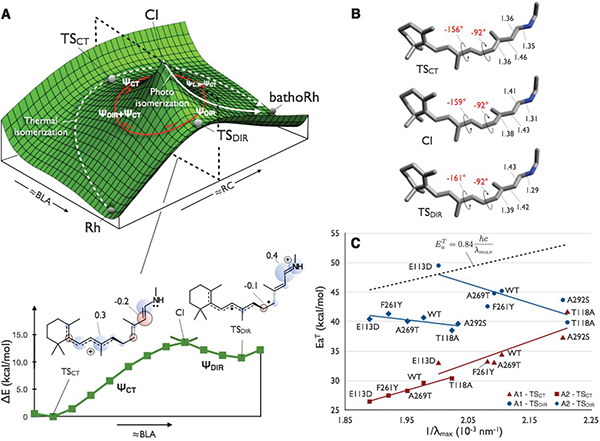Phototransduction is the process by which photon capture by opsins in photoreceptors is transduced into a neural signal. However, there are limits on visual sensitivity that are imposed by thermal means as opposed to the photochemical mechanisms resulting in activation of the phototransduction cascade.
The mechanism of this limit has long been a matter of debate, however this paper by Samer Gozem, Igor Schapiro, Nicolas Ferré and Massimo Olivucci demonstrates a mechanism. Mechanistically, the authors examined the maximum absorption wavelength (λmax) and the thermal activation kinetic constant (k) of different visual pigments which indicates that the thermal and photochemical activations are related. The authors found that rod opsin or rhodopsin possesses a transition state for thermal activation that has the same electronic structure as it does for photo-excitation. This results in spontaneous and random signals being generated in the rod photoreceptors that impose limits on visual sensitivity.
The photographers in the crowd can sort of conceptualize this by thinking about ISO. There is an ISO limit that reduces the ability to capture images without generating appreciable noise. At the lowest end of the psychophysically detectable spectrum (or low light combined with high ISO in photography), the noise overwhelms the potential signals and generating coherent data becomes impossible.
